Interest in Ancient Rome is experiencing a remarkable resurgence, fueled by advances in digital technology. 3D reconstructions have become central to this revival, offering immersive learning experiences that redefine how history is explored both inside and outside the classroom. These detailed digital models allow you to walk through the streets of Rome as it appeared nearly two millennia ago, making the past tangible and vivid.
For 2025 learners and travelers, this marks a pivotal moment. The fusion of photorealistic 3D environments with interactive tools transforms passive observation into active engagement. Whether you are a student striving to understand Roman civilization, including aspects like the legal status of Roman women and their rights and restrictions, or a traveler preparing for an unforgettable visit, these technologies elevate your connection with history.
Key benefits include:
- Enhanced comprehension through visual immersion
- Access to virtual tourism regardless of location
- Dynamic educational content tailored to modern audiences
This new era invites you to experience Ancient Rome not just as distant history but as a vibrant world brought to life by innovation. The understanding of which is crucial as it includes exploring elements such as Roman law, which has significantly shaped modern legal systems, or realizing the enduring influence of the Corpus Juris Civilis on contemporary law.
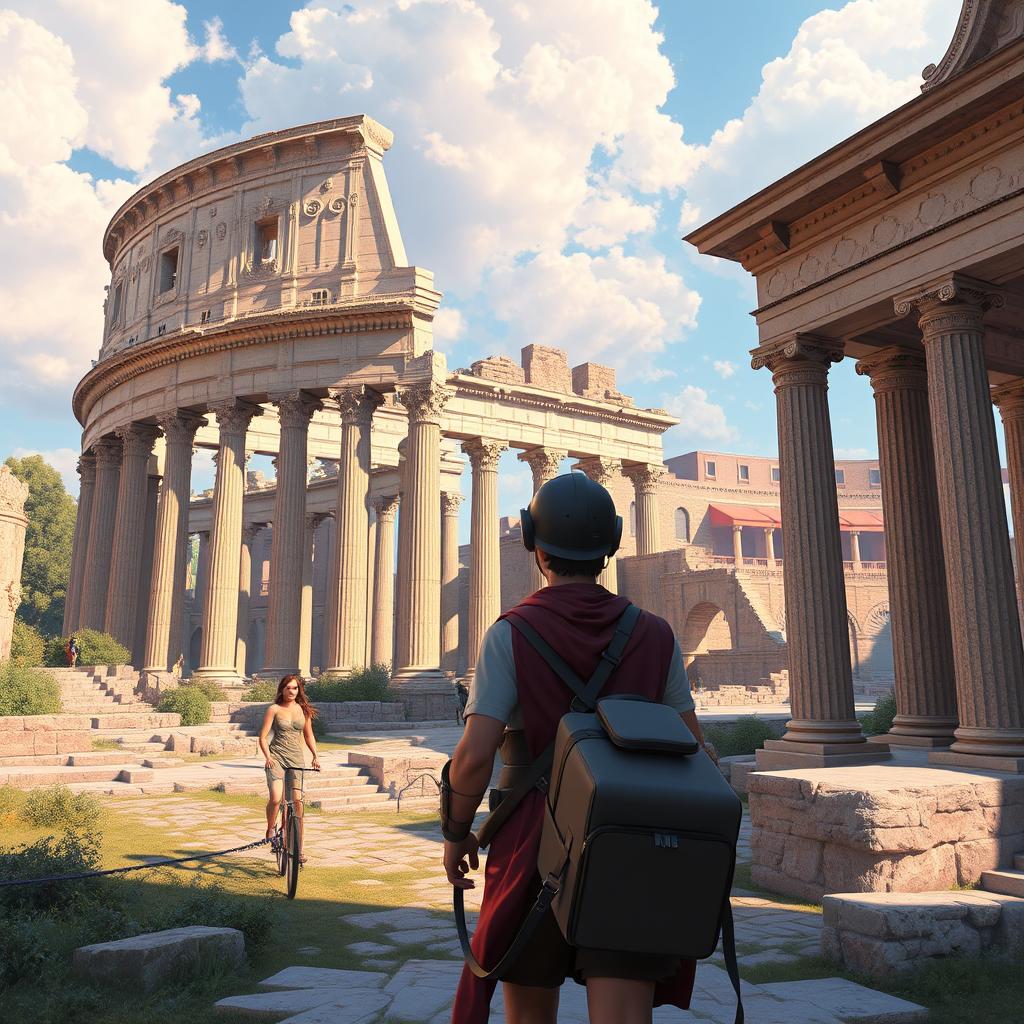
The Rise of 3D Reconstructions in Historical Education
3D reconstructions use digital modeling techniques to recreate historical sites and artifacts with remarkable detail. These virtual models are built from extensive archaeological data, architectural plans, and artistic interpretations. By layering textures and lighting effects, creators produce photorealistic reconstructions that closely resemble how ancient structures originally appeared.
The value of photorealism in educational technology lies in its ability to engage learners visually and emotionally. When you see a digital model of the Roman Forum or the Pantheon rendered with realistic materials and lighting, it becomes easier to understand scale, design, and cultural context. This sensory immersion helps bridge the gap between abstract textbook descriptions and tangible historical experience.
Virtual archaeology plays a critical role in updating these models with the latest findings. Archaeologists continuously uncover new information about Ancient Rome’s architecture and urban layout. Integrating this data into digital reconstructions ensures accuracy and keeps educational content current. For example:
- Newly discovered mosaics or frescoes can be digitally restored.
- Structural features revealed by recent digs inform the rebuilding of walls or columns.
- Updated maps refine the spatial relationships between landmarks.
This iterative process transforms static history lessons into dynamic explorations where you can witness Ancient Rome as an evolving city rather than a fixed snapshot frozen in time.
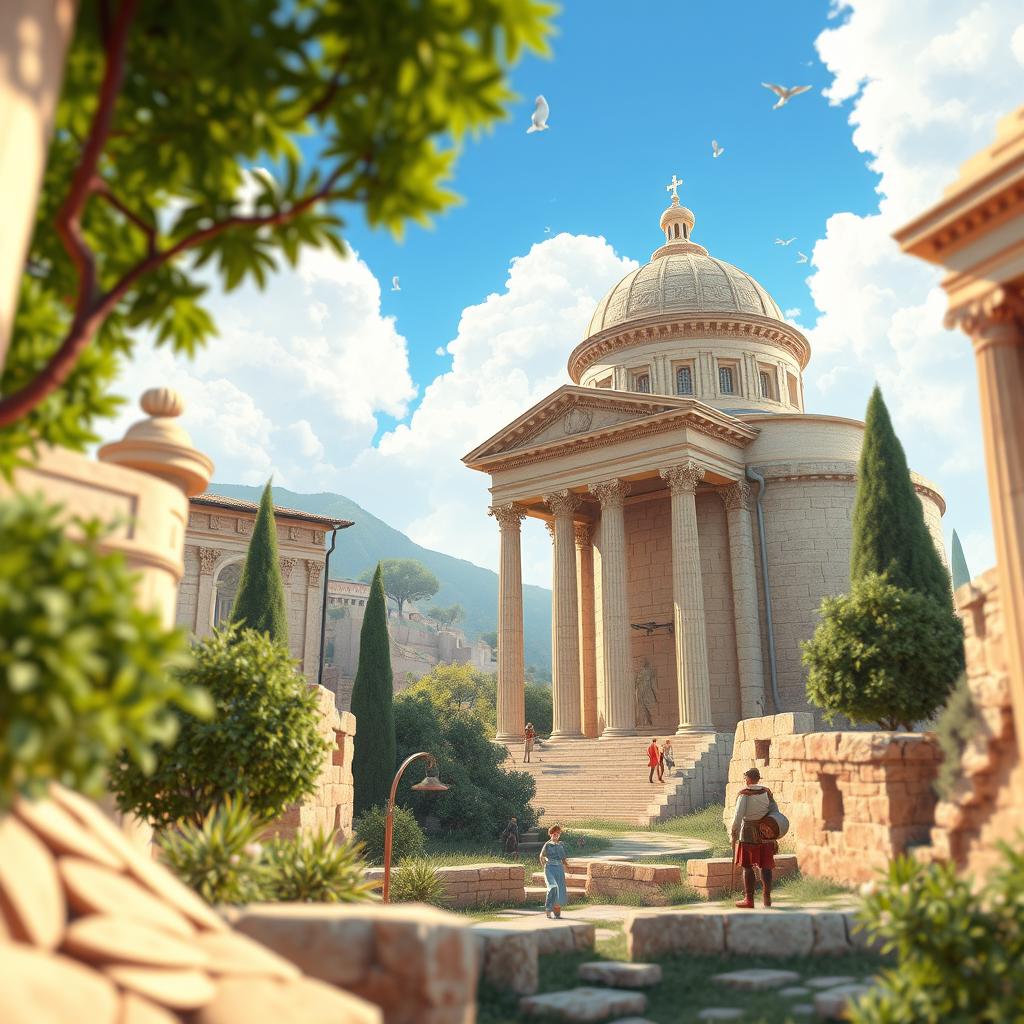
Case Study: Rome Reborn 4.0
Rome Reborn is a groundbreaking project that digitally reconstructs Ancient Rome. It was started by Bernard Frischer at Indiana University Bloomington in the late 1990s, with the goal of creating a detailed 3D model of the city as it appeared in A.D. 320. Over the years, the project has gone through multiple versions, incorporating new technologies and archaeological discoveries.
What is Rome Reborn 4.0?
Rome Reborn 4.0 is the latest and most advanced version of this project. It provides a lifelike, immersive representation of the city during its imperial height.
Key Features of Rome Reborn 4.0
Some of the standout features include:
- The Colosseum, showcasing its architectural grandeur and seating arrangements.
- The Pantheon, with its iconic dome and intricate interior details.
- The Baths of Caracalla, highlighting public leisure spaces.
- The Roman Forum, capturing political and social hubs.
Why A.D. 320 Matters?
Recreating Ancient Rome specifically at A.D. 320 holds great significance. This period reflects the city during a time of transformation under Emperor Constantine, blending classical architecture with emerging Christian influences.
By focusing on this snapshot in history, Rome Reborn 4.0 allows you to explore not just monumental buildings but also urban life, street layouts like those of the Roman roads, and evolving cultural dynamics.
Who Benefits from This Reconstruction?
This detailed digital reconstruction aids historians, educators, and travelers alike by providing an accurate window into Rome’s past that no longer exists above ground yet remains vivid through technology.
It serves as a vital resource for understanding various aspects of ancient Roman life including the lives of plebeians and the patricians, who were masters of luxury and power.
Moreover, it opens up avenues for exploring art and culture during this fascinating era, enriching our understanding of a civilization that thrived from 753 BC to 476 AD.
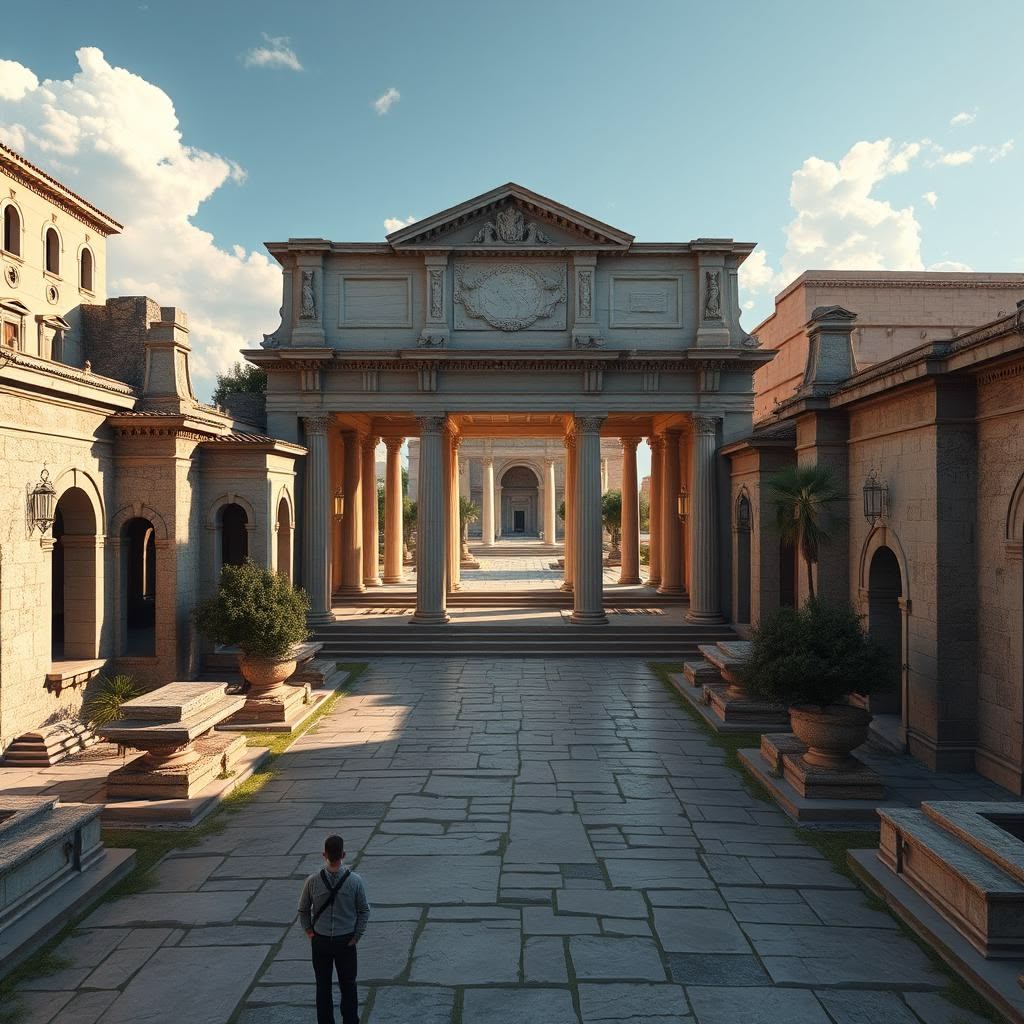
Virtual Reality: A Game Changer for Exploring Ancient Cities
The Yorescape VR app is revolutionizing the way we explore Ancient Rome and Pompeii with its innovative use of virtual reality headsets. This app immerses you in intricately designed 3D replicas, enabling you to stroll through the streets, step inside famous structures, and soak up the ambiance of these historic cities.
Experience History Like Never Before
With VR technology, you can fully immerse yourself in the sights and sounds of Ancient Rome and Pompeii. Unlike traditional learning methods such as textbooks or videos, Yorescape VR engages multiple senses at once — you can see the detailed visuals, feel the sense of space as you move around, and even hear the background sounds — making the learning experience more interactive and unforgettable. This enhanced sensory input strengthens your connection to these historical places, transforming passive watching into active exploration.
Learn Through Interaction
Yorescape VR offers various interactive features that aim to enhance your understanding of Roman history:
- Time travel options that allow you to witness different periods of Rome’s evolution, including its governance during the Roman Republic, a significant shift in political structure.
- Engaging activities that replicate daily life, political happenings, and architectural transformations.
- Opportunities to closely examine artifacts and structures from different angles.
By combining these interactive elements with lifelike environments, the VR app delivers an unmatched educational experience. This approach demonstrates how 3D reconstructions make Ancient Rome come alive for modern learners and travelers, presenting history in a way that feels immediate and relevant instead of distant and abstract.
Discover Key Historical Insights
In addition to exploring ancient cities, the app also provides valuable information about important historical events and figures such as Scipio Africanus, who played a pivotal role in shaping Roman history. It delves into topics like the significance of agriculture in Roman economic growth, which was a crucial factor behind Rome’s economic and social development.
Moreover, users can gain insights into the ancient Roman religion, a comprehensive belief system that permeated every aspect of life from the early days of the Republic to the vast reach of the Empire. The app also sheds light on the rise and fall of the Roman Empire, an ancient civilization that has left an everlasting impact on our world.
The immersive experience provided by Yorescape VR not only enhances our understanding but also allows us to appreciate the rich historical tapestry woven throughout Rome’s past. As explored in this comprehensive study on the impact of virtual reality on education, such innovative technologies are indeed game changers in how we engage with history.
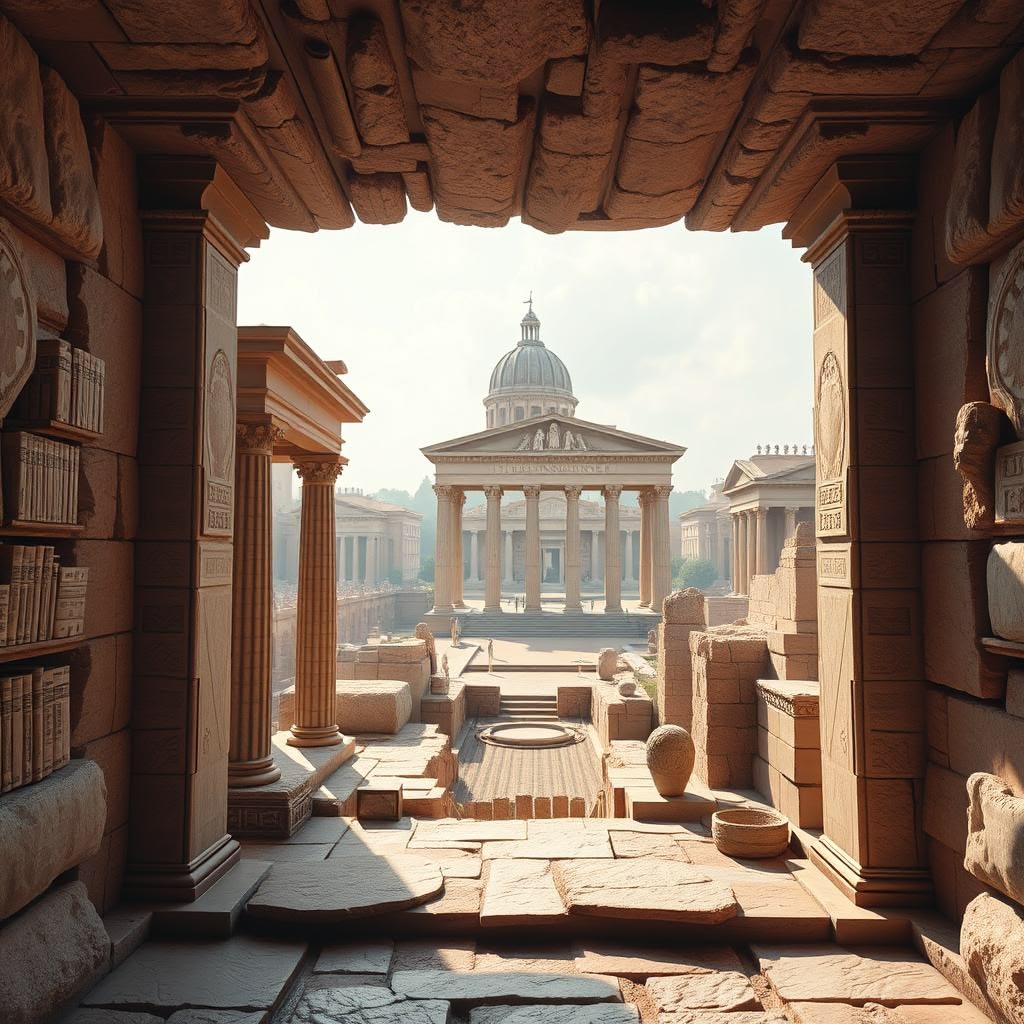
Transforming Archaeological Research Through Digital Technology
Virtual archaeology is reshaping how archaeological research is conducted by integrating 3D reconstructions with traditional excavation methods. These digital models provide a dynamic way to visualize findings in their original spatial context, allowing researchers to interpret ancient structures and artifacts more accurately.
Advantages of 3D reconstructions in archaeology include:
- Contextual visualization: Digital models recreate entire sites, helping archaeologists understand relationships between ruins and their environments beyond fragmented physical remains.
- Digital preservation: Fragile ruins and artifacts can be preserved virtually, reducing the need for invasive handling and mitigating risks from environmental degradation or human interference.
- Enhanced analysis: Researchers can manipulate digital reconstructions to test hypotheses about construction techniques, urban layouts, or usage patterns without disturbing the actual site.
Projects like Rome Reborn have revealed new insights into Ancient Rome’s architectural evolution and urban planning by layering recent archaeological discoveries onto photorealistic city models. For instance, virtual reconstructions have helped identify previously overlooked structural details within the Baths of Caracalla and clarified the development phases of the Roman Forum.
These advancements make digital preservation an essential complement to fieldwork. Virtual archaeology not only safeguards cultural heritage but also expands research possibilities—allowing scholars worldwide to collaborate on detailed reconstructions without geographical constraints.
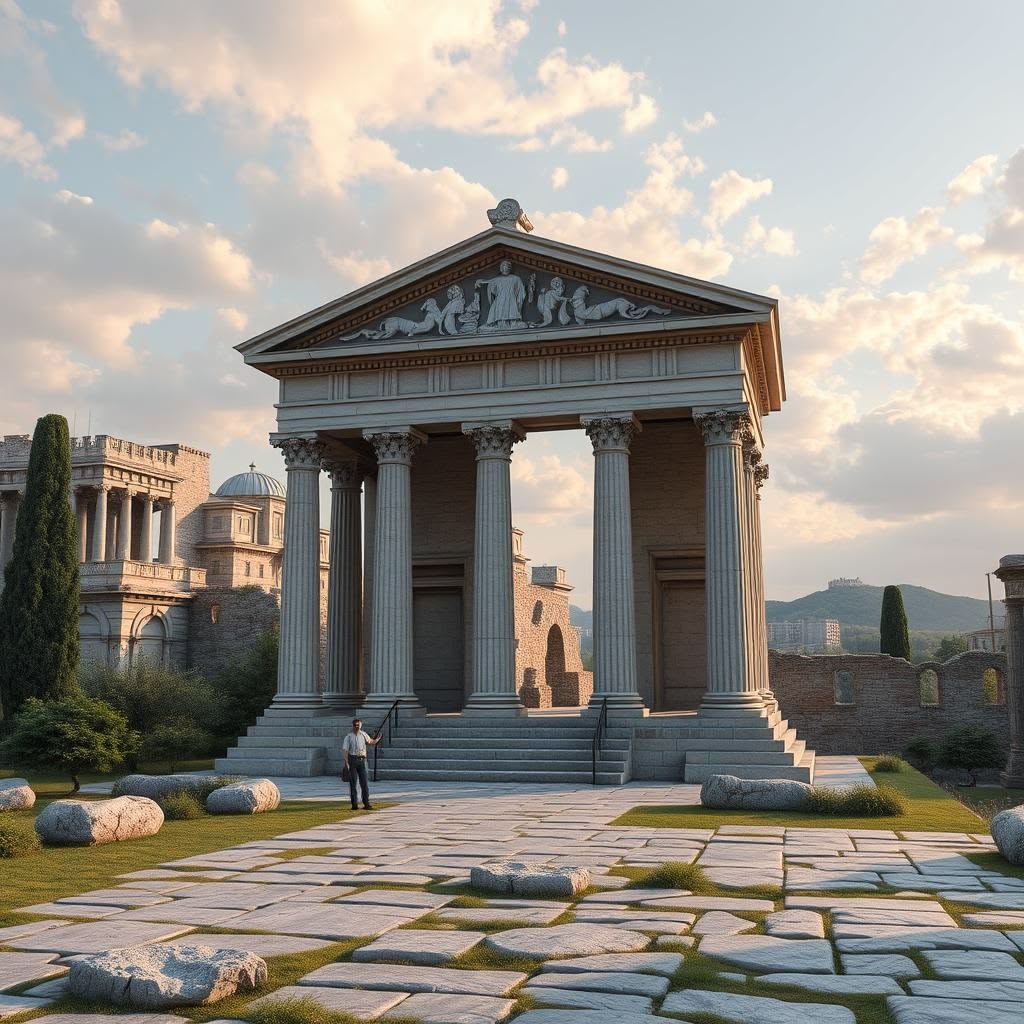
Educational Games and Interactive Missions Set in Ancient Rome
Gamification has become a powerful method for teaching complex historical subjects related to Ancient Rome. Educational games leverage storytelling, problem-solving, and role-playing to engage learners actively rather than passively consuming information. This approach makes Roman history not only more accessible but also memorable.
Examples of game-based learning focus on Roman politics education and ancient architecture learning, two vital aspects of understanding Roman civilization. In political simulation games, players might navigate the intricate power struggles of the Senate, make decisions as emperors, or negotiate alliances, providing insight into governance and diplomacy. Architecture-focused games invite users to design or reconstruct famous buildings like aqueducts, amphitheaters, or temples, deepening comprehension of engineering feats and urban planning.
Interactive missions often challenge players to perform tasks such as managing trade routes, organizing public events in the Forum, or solving mysteries about daily life in Rome. These missions encourage critical thinking while immersing users in authentic scenarios grounded in historical research. By combining entertainment with education, these tools transform abstract facts into lived experiences.
- Active participation strengthens retention
- Problem-solving challenges develop analytical skills
- Narrative-driven gameplay connects players emotionally to historical characters and events
Educational games represent a dynamic way to bring Ancient Rome’s complexity into classrooms and living rooms alike.
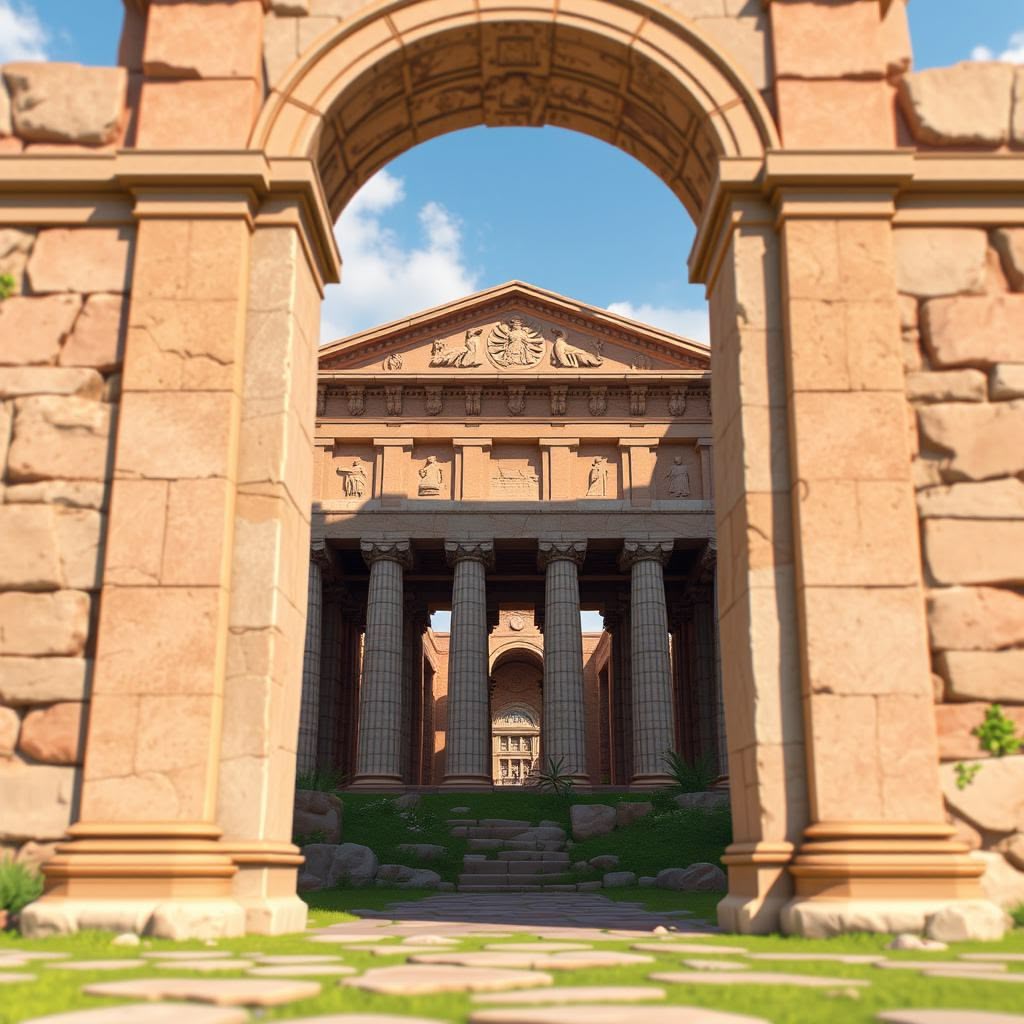
Enhancing Travel Experiences with Virtual Tours
Virtual tours have transformed the way travelers prepare for and experience visits to Ancient Rome. Before setting foot in the city, you can take a virtual preview of iconic sites like the Colosseum and Pompeii’s streets, which you can explore in-depth through Men of Pompeii, your ultimate online resource dedicated to the fascinating world of Ancient Rome.
This preparation helps you plan your itinerary more effectively, focusing on areas of personal interest while gaining historical context ahead of time. For instance, understanding [the social class divide in Ancient Rome](https://www.menofpompeii.com/daily-life-in-ancient-rome-the-social-class-divide) could provide valuable insights into the societal structure of the era.
Exploring Ancient Rome Remotely
For those unable to travel physically, immersive virtual tours offer a unique opportunity to explore Ancient Rome remotely. Using detailed 3D reconstructions and VR technology, you can walk through ancient marketplaces, witness gladiatorial arenas—a topic that sheds light on whether gladiators were heroes or victims of Roman entertainment—or stroll along Roman forums from anywhere in the world. These experiences provide accessibility without geographic or physical constraints.
Blending Real-World Travel with Virtual Experiences
Tourism benefits significantly from blending real-world travel with virtual experiences. You might enhance your actual visit by revisiting virtual reconstructions afterward to deepen your understanding of what you saw in person. Alternatively, virtual tours can inspire future trips by sparking curiosity about lesser-known sites within the ancient city.
Key advantages include:
- Travel preparation: Virtual tours allow you to familiarize yourself with site layouts and historical significance.
- Remote exploration: Access Ancient Rome’s grandeur without leaving home.
- Enhanced tourism: Combine real and virtual experiences for richer engagement.
This synergy between physical travel and digital immersion redefines how you connect with history in 2025. Understanding events like the birth of the Roman Republic, or exploring philosophical influences such as the rise of Stoicism in Rome, are now made easier with these virtual resources.
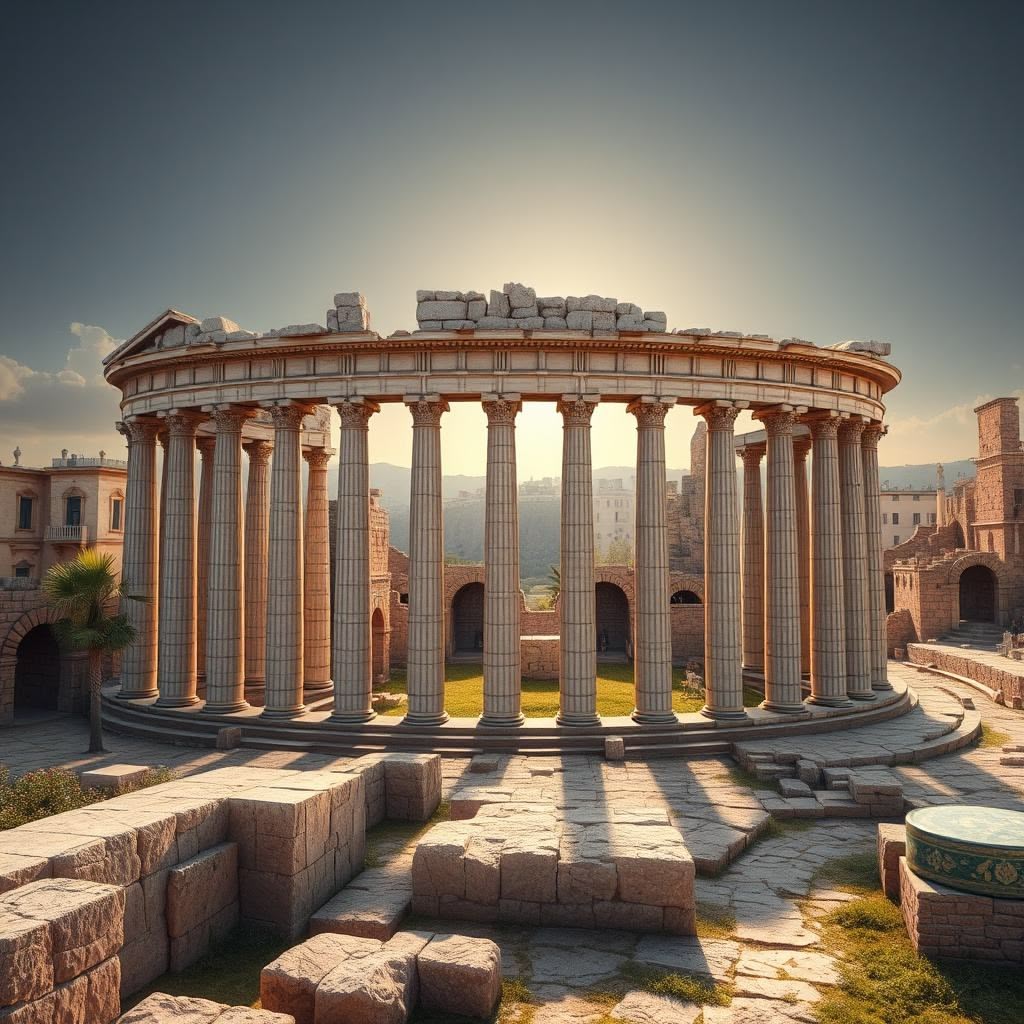
Virtual Museums Bringing Artifacts and History to Life
Virtual museums redefine access to ancient artifacts by combining detailed 3D models with rich historical narratives. These digital spaces allow you to explore delicate objects and monumental relics that would otherwise be restricted due to preservation concerns or geographic limitations.
Immersive exhibitions leverage interactive technology, offering layers of contextual information through multimedia elements such as audio guides, video reenactments, and augmented reality overlays. This approach transforms static displays into engaging environments where history unfolds dynamically around you.
Key advantages include:
- Enhanced engagement: Visitors interact with artifacts in ways impossible in traditional settings, such as virtually handling or examining objects from multiple angles.
- Expanded storytelling: Complex histories become accessible through integrated timelines, character stories, and architectural reconstructions embedded within the exhibit.
- Broader accessibility: Anyone with an internet connection can enter these virtual spaces, breaking down barriers imposed by physical distances or mobility challenges.
Examples of this integration appear in institutions like the British Museum’s virtual tours and the Smithsonian’s 3D artifact collections, where photorealistic reconstructions enrich understanding and appreciation. Museums incorporating projects like Rome Reborn enhance exhibitions by situating artifacts within their original urban landscapes, offering a holistic view of Ancient Rome’s cultural fabric.
These virtual museums not only preserve history but immerse you directly into its living context, making ancient worlds vividly present and personally meaningful.
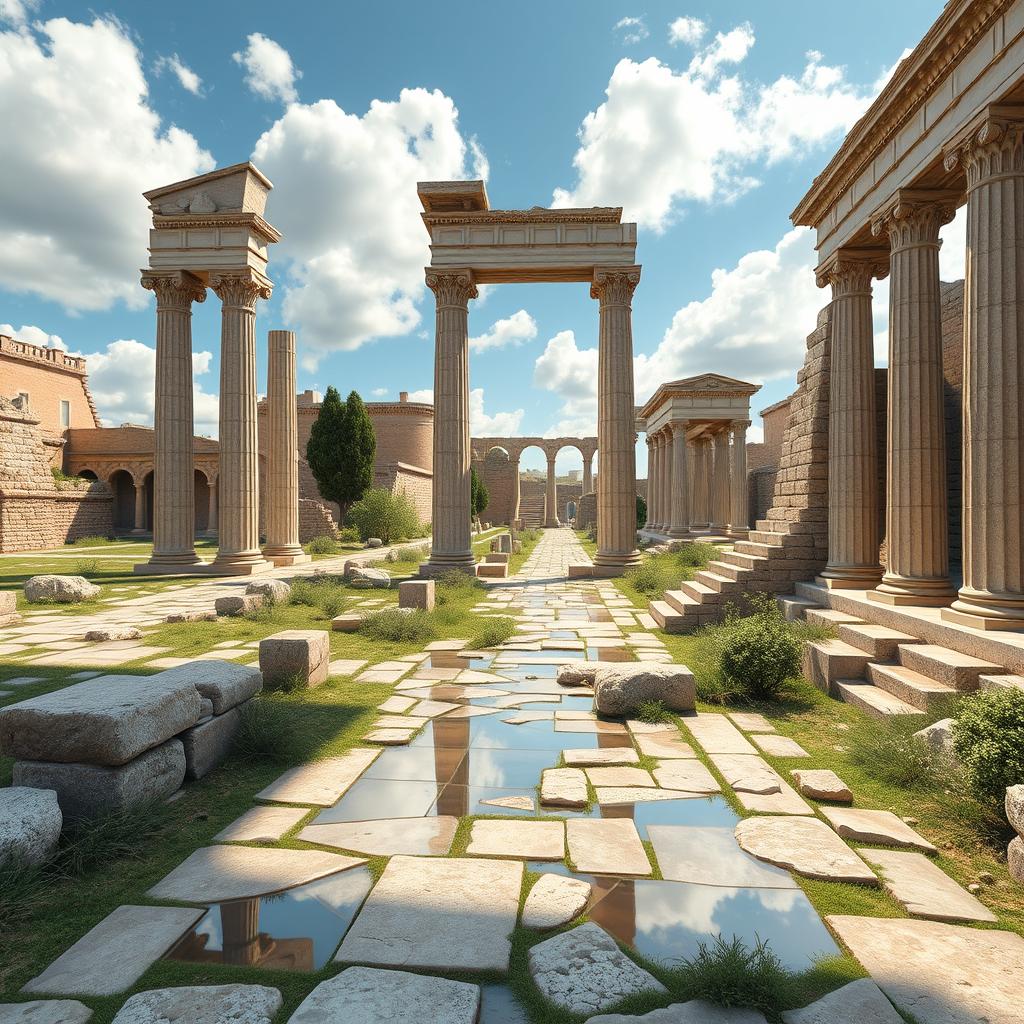
Future Prospects and Impact on Learning & Tourism by 2025
Keywords: “future technology trends , education innovation , tourism evolution“.
Talking points:
- Predictions on how advancing technologies will further transform historical education and travel experiences beyond 2025.
- Potential expansions in content scope covering other ancient civilizations using similar tech approaches.
- The broader cultural impact of making history tangible through immersive digital experiences.
Conclusion
Embracing innovations in digital heritage preservation reshapes how we connect with the past. The fusion of 3D reconstructions and immersive technologies creates a dynamic platform for engaging history education, making Ancient Rome accessible and vivid for learners and travelers alike. These tools align seamlessly with modern tourism trends, offering personalized, interactive experiences that enhance both virtual and physical visits to historical sites.
Key takeaways include:
- Enhanced appreciation of cultural heritage through realistic digital environments
- Empowered learning that turns passive observation into active exploration
- Expanded access allowing global audiences to experience Ancient Rome regardless of location
The journey of rediscovering Ancient Rome becomes not just an academic pursuit but a shared experience that inspires curiosity, preserves legacy, and enriches our understanding of human history.
FAQs (Frequently Asked Questions)
What are 3D reconstructions and how do they enhance learning about Ancient Rome?
3D reconstructions use digital modeling and photorealistic techniques to recreate historical sites and artifacts of Ancient Rome, providing immersive learning experiences. They integrate recent archaeological discoveries to increase accuracy, allowing learners and travelers in 2025 to engage with history in a vivid, interactive way.
How does the Rome Reborn 4.0 project contribute to understanding Ancient Rome?
Rome Reborn 4.0 is a comprehensive digital reconstruction of Ancient Rome as it appeared in A.D. 320, developed by Bernard Frischer and Indiana University Bloomington. It features iconic landmarks like the Colosseum and Pantheon, offering users an accurate virtual exploration that enhances educational and cultural appreciation.
In what ways does virtual reality (VR) improve the exploration of Ancient Rome?
Virtual reality apps such as Yorescape VR utilize VR headsets to provide immersive, interactive experiences of Ancient Rome and Pompeii. VR enhances sensory details and user engagement beyond traditional methods, enabling learners to explore different eras of Roman history through realistic simulations.
How are 3D reconstructions transforming archaeological research?
3D reconstructions complement traditional archaeological digs by visualizing findings within their original context, aiding interpretation. They support digital preservation of fragile ruins and artifacts, enabling researchers to gain new insights through virtual archaeology projects that bring ancient sites back to life digitally.
What role do educational games play in teaching about Ancient Rome?
Educational games and interactive missions set in Ancient Rome employ gamification to teach complex subjects like Roman politics and architecture. These engaging tools make history memorable and accessible by involving learners in simulated activities that reflect daily life and governance during Roman times.
How do virtual tours enhance travel experiences related to Ancient Rome?
Virtual tours offer travelers remote exploration opportunities of key sites like the Colosseum and Pompeii’s streets, serving as preparation for physical visits or alternatives for those unable to travel. By blending real-world tourism with immersive digital experiences, these tours enrich understanding and appreciation of Ancient Rome’s heritage.

